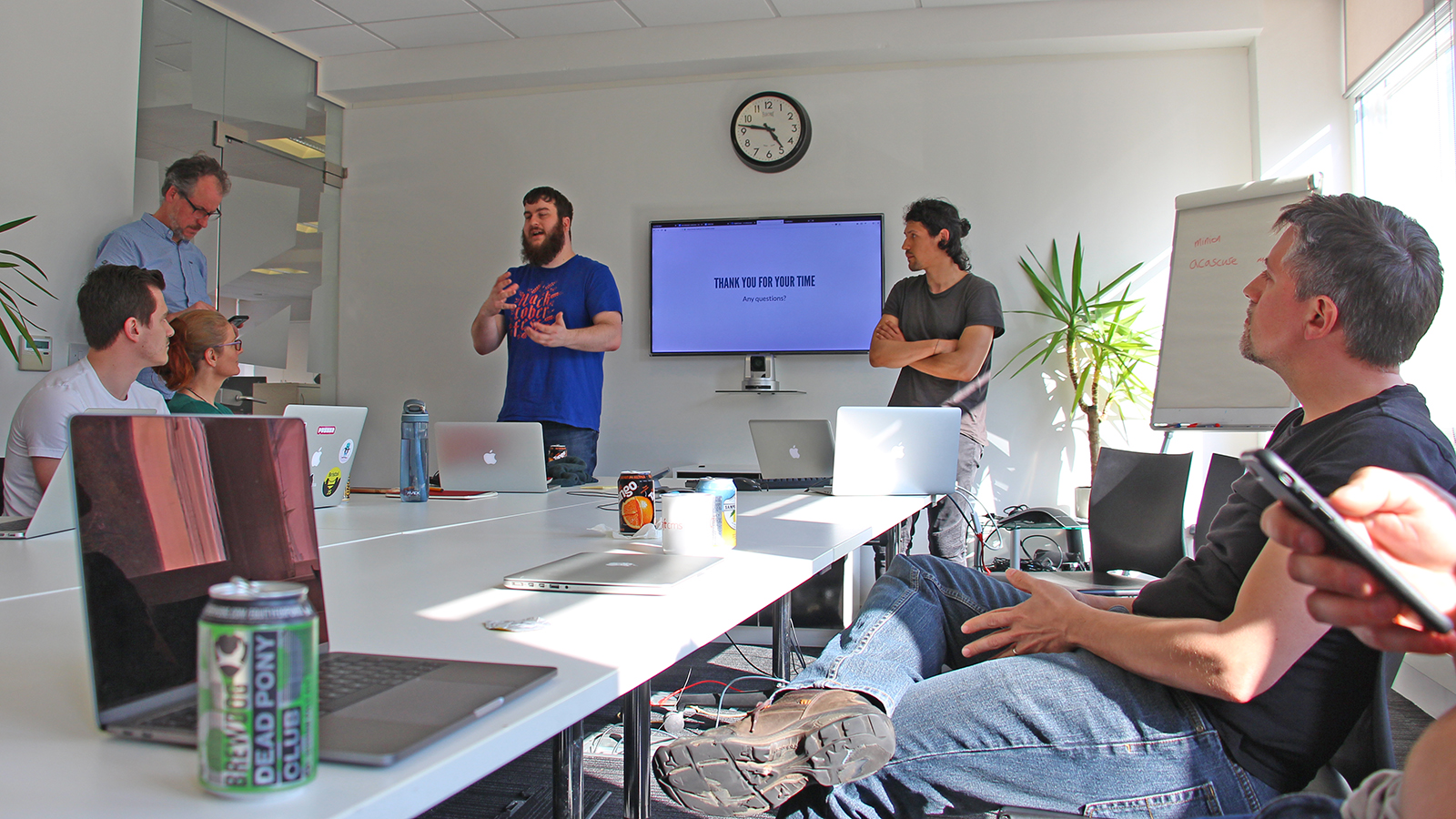During my time at Simpleweb I’ve learnt an incredible amount of tools, techniques, practices and general front-end development knowledge. In this article I’d like to share just a few of the things I’ve learnt that will hopefully make your front-end work easier, more productive or just all-round more enjoyable.
Bear in mind though that if you’re not doing one of these, or indeed any of them, that doesn’t mean to say you’re doing a bad job. The fact that you’re reading about how to create a happier front-end development team is a great sign in itself and, as you’ll find out later in this article, being open to trying something new is key. Enough rambling Dave! Let’s get into the ‘meat and potatoes’…
Documentation and documenting
Alright so you’ve just pulled down the latest version of the code for the project you’re working on, but oh darn you don’t know the login details for the app designs!
Lots of us have ended up in this scenario, and the reflex action to ask a colleague for the details (myself included!). This is where documentation comes into play.
When you’re checking the documentation for those details you are in-fact testing the documentation as well. If you get there and all the details or information you need are already written up then great! But if there’s details missing or out of date information then it’s your opportunity to fix the documentation for the next person.
Documentation could be five lines long or fifteen pages long but it all needs to do one thing, to get people up to speed with the project at hand. If it’s not doing that then it’s not doing its job. For more on this, I’d recommend Taylor Singletary’s blog on writing great documentation.
Reading articles and making time for courses
This is somewhat of a meta piece of advice, since the fact that you’re reading this probably means you’re already quite interested in reading articles. So rather than explaining the benefits I’m going to direct you to some reading and video resources that we at Simpleweb have enjoyed learning from:
- Learn CSS Grid with Wes Bos
- Learn a vast array of development tooling on egghead
- Upcase learning resource from Thoughtbot (which just became free to use)
- React For Beginners with Wes Bos
- Learn ES6 JavaScript with Wes Bos
Internal projects aka side projects
At Simpleweb we like to split up client projects with internal projects that we pitch to each other in our Playground meetings (pictured below). For some developers out there side projects out of work hours is the only way they really get to try out the latest tooling and be able to really flex their coding muscles.
Allocating time to these sorts of projects during work hours means that we gain all the benefits without the issue of burnout.
Trying new tools and flexing your conceptions
As people, delving into the unfamiliar is something that we are often keen to avoid. We tend to get comfortable with what we know, development tools included. It’s important to shake things up once in a while and just try out that new framework or coding technique. Obviously there’s a time and a place for this, we can’t try out 0.0.1 beta Cool New Framework on that big paying client, but we can at least experiment.
That new tool you try may open up a whole range of different opportunities, or inspire you to use different techniques in the other tools you use. Or it could prove that a new tool is actually not that suitable, but at least you explored that route. Criticising a tool just because the documentation examples “look weird” isn’t a strong case, but sharing your pitfalls after trying it in a common scenario is a valuable exercise.
Front-end team meetings and knowledge sharing
Every other week the front-end team at Simpleweb meet up to share articles, current projects, successes and even issues. We find these meetings really valuable as the live conversations really encourage us to knowledge share. There is also a front-end group Slack channel that we share links, code and discuss topics. But having allotted time to talk about these things face-to-face, or screen-to-screen if you’re remote, allows us to really pick each others brains.
If you’re the only front-end developer in your team, or one of a very small team, you might find it useful to join some public front-end Slack and Spectrum groups:
- WeAllJS, an inclusive community of JavaScript developers which isn’t just about JS
- CodePen Spectrum community
- The New Dynamic, a community of developers dealing with static sites (which often surrounds front-end development)
- And if you live near us lot in sunny Bristol, South West Front-end, a local community of front-end people from the South West of the UK
To apply for investment for your early-stage startup, just fill out this application form.




